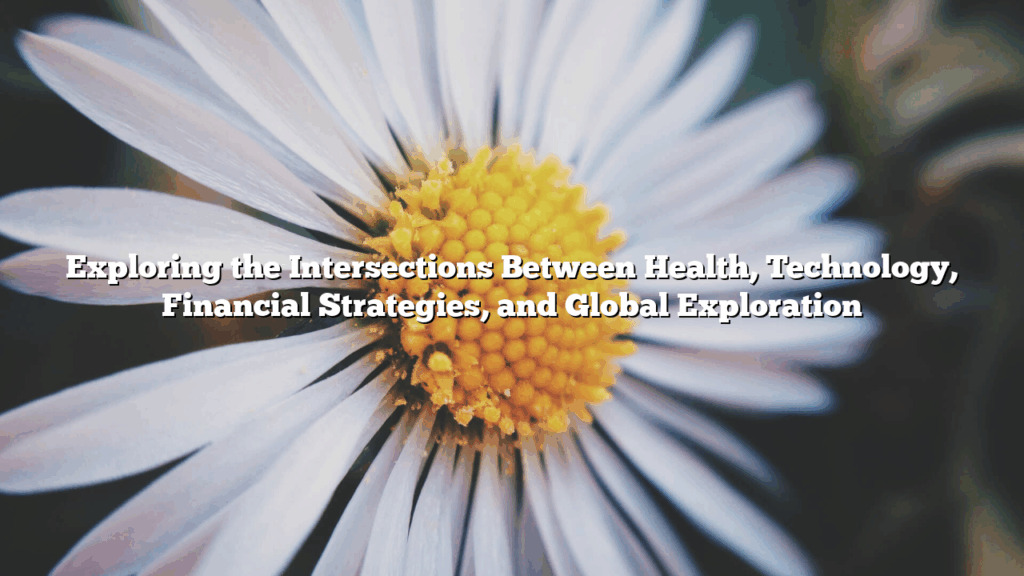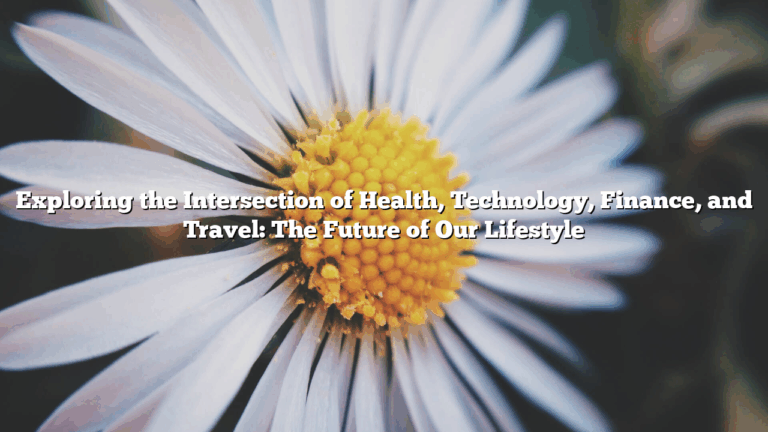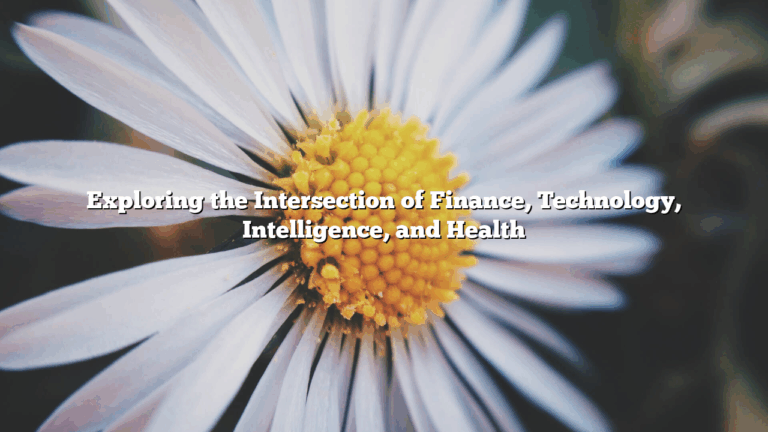
Exploring the Intersections Between Health, Technology, Financial Strategies, and Global Exploration
In today’s ever-evolving world, the integration of health, digital innovation, economic planning, and mobility is growing ever more significant. These four sectors are transforming the way we live, work, and connect with one another.
Health in the Digital Age
The importance of maintaining good health has never been so vital. With the rise of digital health tools, consumers are now able to track their vitals in real time.
Smartwatches such as the Apple Watch or Fitbit deliver features like heart rate monitoring, step tracking, and sleep analysis. These gadgets enable users to take a proactive role in their own wellness journey.
Moreover, online consultations has revolutionized healthcare by allowing remote consultations, especially beneficial during the COVID-19 pandemic. This convenience reduces the need for in-person visits and conserves both time and money.
The Digital Frontier
Technology has undoubtedly influenced every part of our lives. From AI assistants to blockchain and AI, the speed of advancement is rapid.
In the health sector, artificial intelligence is being used to predict diseases with high accuracy. In finance, AI aids in fraud detection and algorithmic trading. In travel, apps like Google Maps or TripIt optimize the journey experience.
Perhaps the most revolutionary developments is the use of distributed ledger technology for secure health and financial records. This ensures transparency while minimizing the risk of fraud.
Modern Financial Strategies
With the expansion of financial technology (fintech), managing money has become more efficient. Apps like Personal Capital help users to track expenses more effectively, while platforms like Robinhood or eToro allow investing with little to no fees.
Cryptocurrency, while still controversial, represents a paradigm shift in how value is stored and transferred. Bitcoin and Ethereum, for example, are being increasingly adopted in various industries, including travel and e-commerce.
Moreover, contactless payments such as Apple Pay, Google Pay, and PayPal have revolutionized how consumers make purchases, making transactions simpler than ever before.
The Future of Global Mobility
The travel industry has seen massive changes in the last few years. While the pandemic halted international tourism, it also sparked a wave of innovation and new travel trends.
Remote work has led to a rise in “workcations,” where people merge work and leisure in exotic locations. Countries like Portugal, Estonia, and Costa Rica now offer digital nomad visas, attracting tech-savvy travelers.
Sustainable travel is another growing trend. Tourists are increasingly choosing eco-friendly accommodations, minimizing their carbon footprint, and engaging with local economies.
Technology also plays a key role in travel. From online booking to AI-powered travel planning, the experience is becoming more efficient. Even airport security is seeing upgrades with biometric check-ins and digital passports.
The Synergy of These Domains
What ties these four fields so powerful is how they overlap. For instance, a health-conscious traveler may use a smartwatch to track sleep while flying, pay for meals with crypto, and book trips via AI-assisted platforms—all of which tie together tech, finance, health, and travel.
Governments are also recognizing these overlaps and are developing integrated solutions. Imagine an app that not only tracks your physical activity and gives you health tips but also suggests travel destinations based on your health goals and helps finance the trip through micro-savings or crypto rewards.
This kind of interconnected thinking is shaping the future.
—
Conclusion
In a world where everything is being reshaped by technology, the fusion of health, finance, travel, and tech is creating exciting opportunities.
Staying informed of these changes can prepare individuals to make more strategic choices, live healthier lives, travel smarter, and achieve financial goals more effectively.
slot demo is not just digital—it’s multi-dimensional.



